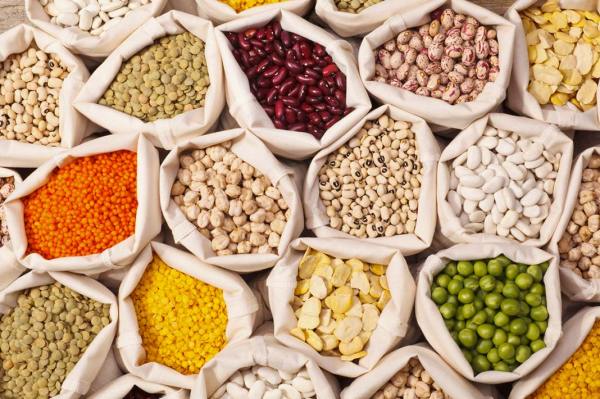There are many reasons someone may decide to eliminate red meat from their diet. Maybe they’re vegan, vegetarian, just don’t enjoy the taste or texture or are concerned about the impact on their heart health. Whatever the reason, it’s usually not too much of an issue—there are plenty of other fantastic, plant-based foods that are (almost) as high in protein. However, one inconvenience many people come across when avoiding red meat is that it’s a lot harder to hit your iron levels.
According to Nutritionist Dr Emma Derbyshire, those who are most likely to have reduced their consumption of red meat are young women—who are already at the highest risk of being iron deficient. The reason we are more likely to be deficient in iron is due to the blood loss through our menstrual cycle each month. As a result, the recommended daily intake of iron for menstruating woman 18 mg.
Iron is essential for blood production within the body. If you don’t have enough iron, your body can’t make enough healthy oxygen-carrying red blood cells, which can result in an iron deficiency (also known as anaemia). The symptoms include feeling weak, tired and short of breath and if left untreated, it can lead to heart complications. Thankfully, there are plenty of healthy and delicious plant-based foods that are high in iron that aren’t red meat.
6 plant-based foods that are high in iron
Tofu

Vegan foodie favourites tofu, tempeh and soybean are surprisingly high in iron— with a half-cup serve including 3.6 mg of iron, which is 19% of the RDI. It’s also high in protein and packed with other minerals and vitamins, including thiamine, calcium, magnesium and selenium.
Legumes

From chickpeas and lentils to beans and peanuts, loading up on legumes is a great way to pump some iron. While the exact amount varies, most legumes are rich in iron, with one serve containing anywhere from 15-30% of your RDI. They’re also a super versatile way to bulk out your meals if you’re vegetarian or vegan.
Leafy greens

Yep, just another reason veggies are freakin’ amazing for you. Leafy greens such as kale, swiss chard, collard, beet greens and spinach contain between 2.5–6.4 mg of iron per cooked cup, or 14–36% of the RDI.
Fortified cereals

Most wholegrain cereals and oats already contain some iron. However, many have been fortified with additional iron so that you can hit 100% of your daily recommended intake in just one serve! Just make sure you opt for one that is also high in fibre and low in sugar, to improve the overall health profile. You should also pair it with some citrus fruit or orange juice, as the type of iron found in cereals is non-haeme, so should be consumed with a source of vitamin C to improve iron absorption.
Nuts and seeds

Many nuts and seeds are a fantastic source of iron, including almonds, cashews, pinenuts, macadamia nuts and sunflower seeds. These each contain around 6-9% of the RDI per 100 gram serve. However, at the very top of the list is pistachio nuts, which contains 14mg per serve–nearly 4 times the amount of almonds, brazils or cashews!
Quinoa

Quinoa once again defends its superfood status, with one cup containing 2.8 mg of iron, which is 15% of the RDI. It also contains double the amount of protein as most other grains and is high in magnesium, folate, magnesium, copper, manganese and many other vitamins and minerals.




